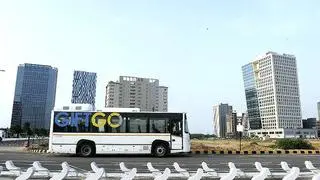Direct Benefit Transfer (DBT) during first nine months of the current fiscal has exceeded the total of fiscal 2017-18. According to government data, total DBT till date is over ₹1.94 lakh crore while the amount was over nearly ₹1.91 lakh crore during 2017-18.
DBT is a reform initiative where benefits, in cash or in kind, are delivered directly to identified beneficiaries using Aadhaar, thereby eliminating ghost beneficiaries.
A detailed analysis of the figures for the current fiscal shows that DBT in kind has more than doubled and that too when the number of schemes is now less. PDS (Public Distribution System) and PAHAL are the two key schemes where the benefit is transferred in kind. Rural housing (PM Awaas Yojana – Gramin or PMAYG) and Mahatma Gandhi National Rural Employment Guarantee Scheme (MGNREGS) lead the pack in cash transfer.
As of now, 434 schemes are administered by 56 ministries under DBT. Officials estimate that with higher use of DBT in reaching the beneficiaries, saving is likely to go beyond the initial estimates. Earlier, the overall saving during the current fiscal was estimated at ₹40,000 crore, and this might touch ₹45,000 crore or more.

DBT and other governance reforms have led to the removal of duplicate/fake beneficiaries and plugging of leakages, as a result of which the government has been able to target the deserving beneficiaries and also save funds. Cumulative saving up to March 2018 was ₹90,000 crore, of which ₹32,983.71 crore was in 2017-18.
At the core of DBT is JAM — Jan Dhan (bank accounts), Aadhaar and mobile connection. As of now, there are over 33 crore Jan Dhan accounts, 123 crore Aadhaar number and 100 crore mobile connections. Officials say that a combination of these three helped in reaching the real beneficiary and weeding out fake/duplicate ones. For example, 3.79 crore duplicate, fake/non-existent, inactive LPG connections were eliminated. In addition, 2.22 crore consumers stopped claiming subsidy (including 1.04 crore ‘Give It Up’ consumers). All these resulted in a total savings of over ₹42,000 crore on this account till March 31, 2018.
Similarly, the government saved nearly ₹30,000 crore in food subsidy after the deletion of 2.75 crore “duplicate and fake/non-existent” ration cards.








Comments
Comments have to be in English, and in full sentences. They cannot be abusive or personal. Please abide by our community guidelines for posting your comments.
We have migrated to a new commenting platform. If you are already a registered user of TheHindu Businessline and logged in, you may continue to engage with our articles. If you do not have an account please register and login to post comments. Users can access their older comments by logging into their accounts on Vuukle.